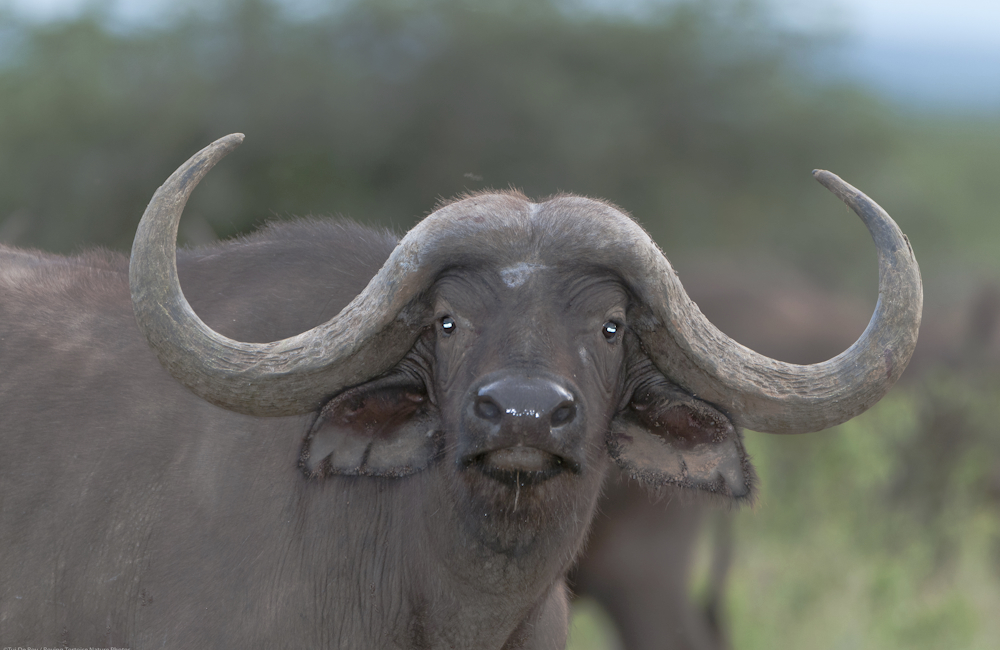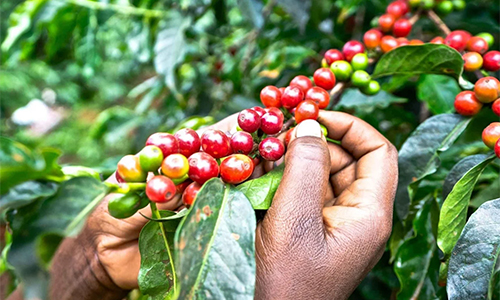The Big Five
The Big Five
The Big Five – African Animals found in Kenya
The Big Five is a term that is used to refer to the 5 African animals that early big game hunters considered most difficult and dangerous animals to hunt on foot in Africa. These animals include the African elephant, lion, leopard, Cape buffalo, and rhinoceros.
Still, the lion remains Kenya’s most sought after tourist attraction on the country’s many African wildlife safaris. The term Big Five was originally coined by big-game hunters as a way to describe the elusiveness of Africa’s most fascinating wild animals. For hunters tracking the big five by foot, the lion, African elephant, Cape buffalo, leopard, and rhinoceros were the most dangerous to hunt. These days, Kenya’s Big Five are protected by conservation laws and other anti-poaching efforts are in place, but for visitors to Kenya, catching a glimpse is still a challenge.

LION
-
The lion is often called the king of the jungle because it is the fiercest and largest predator on land. Lion’s natural prey includes zebras, impalas, giraffes and other herbivores especially the wildebeest. Lions tend to group themselves in pride of 12. Males are easily distinguished from females with their shaggy manes and are generally much larger. The females, however, do most of the hunting. Although they have been known to attack humans, lions are generally calm animals that do not usually seem threatened by close proximity to people.
- Lions will feed on anything from Tortoises to Giraffe but prefer what they’ve been brought up on so their main diet varies from pride to pride.
- Male Lions develop their manes in the beginning of their third year of age
- A pride can be anything from 2-40 Lions.
- Lions are the most sociable of all the cat families, related females will even cross suckle each others cubs enabling the other females to stay out hunting.
- A female will have up to 6 cubs after a 105 day gestation period.
- If a male takes over a pride he will kill any cubs so that he can sire his own.
ELEPHANT
-
This is the largest land animal in the world and also the largest of the big five. Some of the adults can reach up to 3 meters in height. The adult males, bull elephants, are usually solitary creatures while females are generally found in groups led by a matriarch surrounded by younger females and their offspring. Although they are referred by many as gentle giants, elephants can be very dangerous and have been known to charge at vehicles, humans and other animals when they feel threatened.
The African elephant is the world’s largest land mammal. Due to its gigantic stature, the elephant has no predators apart from men who hunt it for its tusks. However, elephant hunting and ivory trade are prohibited in Kenya. Elephant in Kenya
Elephants have a sharp sense of smell and are highly intelligent. They are reputed to be the only animals that recognize one another, even after death. Kenya wildlife is scattered in various wildlife parks throughout the country. Amboseli National Park is home to most elephants and is the best place to see them.
-
The elephants in Tsavo National Park have a distinct reddish-brown color that they obtain from the red volcanic soil in Tsavo. Elephants in other parks are grayish in color.
- Elephants can use their trucks to act as snorkels when crossing deep water
- Their ears help them to keep cool in the hot sun, by flapping them they can dissipate heat from veins lying just under the skin
- Their Ivory tusks which sadly put them at huge risk from poachers are modified upper incisors which never stop growing.
- The gestation period for a female Elephant is 22 months, the longest of all mammals!
- Their lifespan is 60-80 years.
BUFFALO
-
This is the largest land animal in the world and also the largest of the big five. Some of the adults can reach up to 3 meters in height. The adult males, bull elephants, are usually solitary creatures while females are generally found in groups led by a matriarch surrounded by younger females and their offspring. Although they are referred by many as gentle giants, elephants can be very dangerous and have been known to charge at vehicles, humans and other animals when they feel threatened.
The African elephant is the world’s largest land mammal. Due to its gigantic stature, the elephant has no predators apart from men who hunt it for its tusks. However, elephant hunting and ivory trade are prohibited in Kenya. Elephant in Kenya
Elephants have a sharp sense of smell and are highly intelligent. They are reputed to be the only animals that recognize one another, even after death. Kenya wildlife is scattered in various wildlife parks throughout the country. Amboseli National Park is home to most elephants and is the best place to see them.
- The elephants in Tsavo National Park have a distinct reddish-brown color that they obtain from the red volcanic soil in Tsavo. Elephants in other parks are grayish in color.
- Elephants can use their trucks to act as snorkels when crossing deep water
- Their ears help them to keep cool in the hot sun, by flapping them they can dissipate heat from veins lying just under the skin
- Their Ivory tusks which sadly put them at huge risk from poachers are modified upper incisors which never stop growing.
- The gestation period for a female Elephant is 22 months, the longest of all mammals!
- Their lifespan is 60-80 years.
-
The buffalo is perhaps the most dangerous to humans among the big five. Buffalos are very protective and territorial and when threatened they are known to charge with astonishing speed. The buffalo are mostly found in groups and large herds. They spend most of their times grazing the savanna and floodplains. When approached the dominant bulls will tend to take an aggressive vigilant stand while the other adults gather around the calves to protect them.
Famed for its boiling temper, the buffalo is one of the most feared animals. It is not only feared by humans but also by some of the most daring predators in the wild.
The mighty lion rarely ever hunts a buffalo. Most lions that try end up dead or badly injured. Lions and hyenas are only known to hunt solitary aging buffalos that are either too weak to fight or greatly outnumbered.
RHINO
-
Rhinoceros are an endangered species of one of the big five. Even seeing one at a distance is a rare treat. There are two types of rhinos: the black and white rhinos. The white rhino gets its name not from its colour which is really more yellowish grey but from the Dutch word “weid” which means wide. This is in reference to the animal’s broad, wide mouth. With its square jaw and wide lips, they are able to graze. The black rhino, on the other hand, has a more pointed mouth which it uses to eat leaves from trees and bushes. White rhinos are much larger than the black rhinos and more common.
There are two species of rhinoceros found in Kenya: White and black rhinos. Both are endangered species. The white rhino derives its name from the Dutch word Weid meaning broad.
White rhinos have a broad, wide mouth adapted for grazing. They often hang out in large groups.
The biggest white rhino population in Kenya is found in Lake Nakuru National Park. The black rhino has a pointed upper lip adapted for browsing. It feeds on dry bush and thorny scrub, especially acacia.
- Black rhinos have a sharp sense of smell and hearing but very poor eyesight. They lead a solitary life and are the more dangerous of the two species. Masai Mara National Reserve has the largest population of black rhinos, along with many other Kenya animals.
- All Rhino species are endangered animals due to poaching and loss of habitat.
- The Maasai Mara is home to only Black Rhino of which there are approximately 40 within the whole 1510sq.km reserve.
- The black Rhino is defined by it’s hooked lip and narrower jaw than the White Rhino which is found in other Kenyan parks.
- African Rhino do not have incisor or canine teeth only huge serrated cheek teeth for grinding vegetation.
- A female Rhino will have a calf only every 2-4 years after a 15 month gestation.
- Rhinos when charging can reach up to 30mph (50kph)
LEOPARD
-
Unlike the lions, leopards are almost always found alone. They are the most elusive of the big five since they mostly hunt during the night. The best time to find them is very early in the morning or at night. During the day you need to look carefully for these animals who usually can be found partially camouflaged in the undergrowth or behind a tree.
Dubbed the “Silent Hunter”, the leopard is a very elusive animal with a gorgeous skin.
It is nocturnal, hunting at night and spending its day resting in trees. The leopard lives a solitary life and only pairs up during the mating season.
Leopards hunt on the ground but take their “kill” up into the trees, out of the reach of scavengers such as hyenas.
-
Most people fail to draw the distinction between Leopards and Cheetahs, but they are two very different animals.
- A leopard is stouter while a Cheetah is slender
- The Leopard has a shorter body length while the Cheetah has a longer body length
- The Cheetah has black tear marks running down its eyes while a Leopard doesn’t
- Although both have golden yellow fur, a leopard has black rings while a Cheetah has black spots on their fur.
- Leopards are nocturnal hunters.
- They are mainly solitary
- They will feed on any kind of animal protein available from Termites to Waterbuck. They will also turn to livestock and domestic dogs when desperate.
- Where possible they will hide their kill up a tree to avoid losing it to Lions and Hyena.
- A female will have 1-4 cubs after a 90-105 day gestation period.
- Leopards are famous for their rosette spots.






